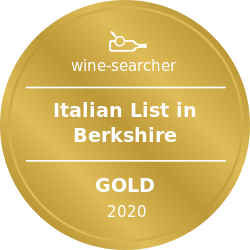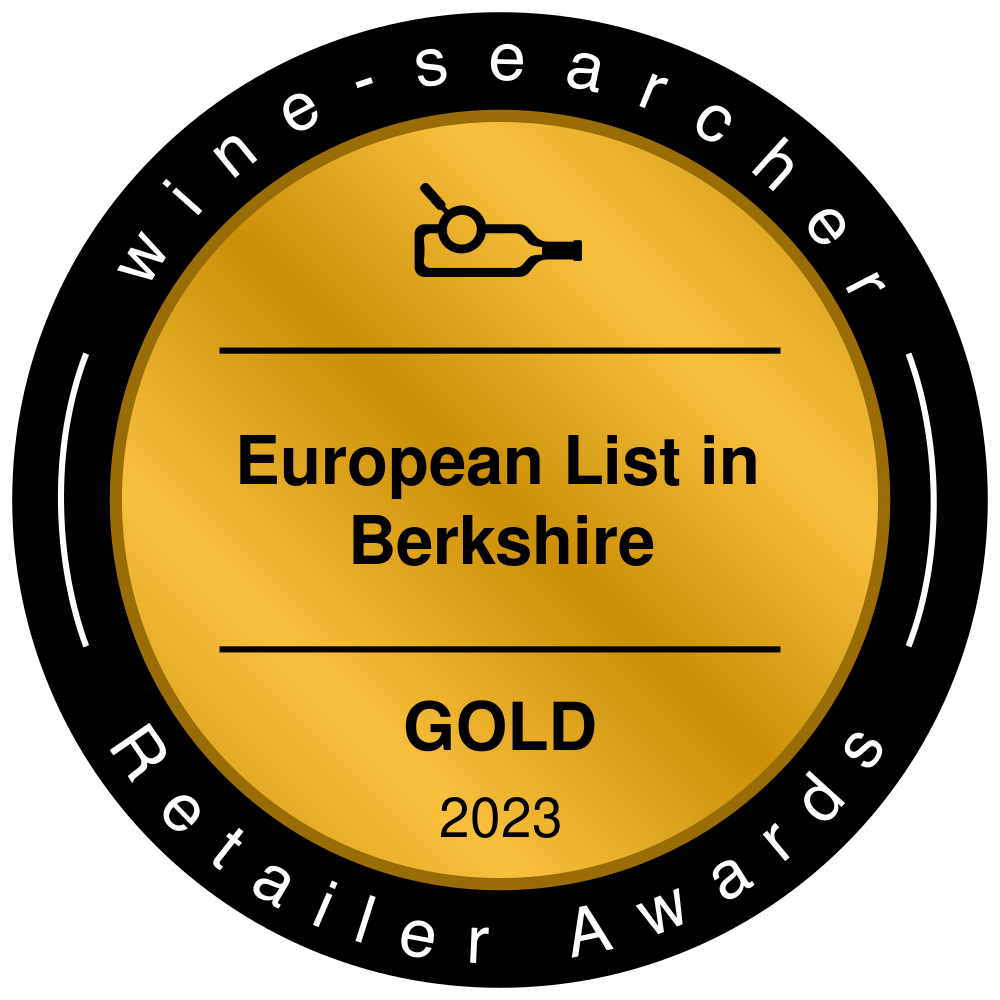Knowledge Centre
WINE REGIONS AND
TYPES OF WINE
AMARONE
Amarone, the most famous of Italy’s dry dried grape wine, is produced from the identical grape varieties (Corvina, Molinara, Rondinella Corvinone and Dindarella) and in the same production zone of Valpolicella. Amarone DOC is made from selected superior whole bunches of grapes which are dried in special drying chambers where the grapes are strungup from the ceiling. The grapes are left to dry until January following the vintage. After the drying process(a weight loss of some 30-40% of the initial weight occurs during this time), the grapes are pressed and fermented dry. The wine is then aged in wooden casks for a minimum of 2 years.
Bordeaux
Bordeaux is both the largest producer of AC wines (50,000 hectares of basic AC Bordeaux are planted) and the source of the most sought after ones. It has top quality varietals, a moderate climate, and a long heritage of producing diverse styles across the price spectrum, as well as a complex trade structure that continues to perplex and attract wine lovers everywhere. The major influences on the climate are the Atlantic Ocean and the Dordogne and Garonne rivers (that connect to the Gironde estuary), which moderate temperatures, cooling them in summer and warming them in winter. Annual rainfall is relatively high, particularly in the Médoc, at around 1,000 mm per year, therefore the most prized soils here are gravel-based, which encourage free drainage. The humidity of the closest vineyards to the river, in Sauternes and Barsac, contribute to the formation of Noble Rot, which concentrates the natural sugars, flavours and acidity in the grapes, and results in some of the finest sweet wines in the world. Entre-Deux-Mers (literally ’between two seas’, or the two rivers mentioned above) is often the source of excellent value wines. The best are found from the slightly higher plateau, which is windier and therefore drier in climate. Here, stony and sandy-clay soils meet, giving crisp, elegant whites and supple reds for drinking in their youth.
Red Bordeaux, which is traditionally known as claret in the United Kingdom, is generally made from a blend of grapes. Permitted grapes are Cabernet Sauvignon, Cabernet Franc, Merlot, Petit Verdot, Malbec and Carménère. Today Malbec and Carmenere are rarely used. Cabernet Sauvignon (Bordeaux's second-most planted grape variety) dominates the blend in red wines produced in the Médoc and the rest of the left bank. In Saint-Émilion, Pomerol and the other right bank appellations Merlot is the most dominate. White Bordeaux is predominantly, and exclusively in the case of the sweet Sauternes, made from Sémillon and then a small amount of Sauvignon Blanc and Muscadelle -. Dry white wines are made mostly from Sauvignon.
Bordeaux Blends
Centuries of making (and drinking) wine led to the blend that has become synonomous with Bordeaux. Winemakers in the New World replicate this formula to create successful blends in their respective regions - you may see Bordeaux blends from the US labeled Meritage (rhymes with heritage). The name defines American wines made from Bordeaux grapes.
Notable Facts - Cabernet Sauvignon, Merlot, Cabernet Franc, Malbec and Petit Verdot. These five red grapes are the components of a classic Bordeaux blend. Cabernet Sauvignon and/or Merlot usually play the lead role, while Cabernet Franc, Malbec and Petit Verdot act as the supporting cast. These three grapes help to add color, structure and body in varying amounts. A Bordeaux blend typically, but not exclusively, uses at least three of the five grapes to be labeled as such, but many wines in Bordeaux and else where stick to just two. The beauty of the blend? Each year the percentage of each grape in the blend can vary and the winemaker can include more of the variety that excelled in that particular vintage.
Champagne
Champagne remains the pinnacle of sparkling winemaking, despite the proliferation of ’traditional method’ sparkling wines on the market. The region’s success continues unabated, even in recessionary times. The winning combination of top quality grape varieties, a northerly climate, hundreds of years of winemaking using the ‘méthode champenoise’, as well as an efficient marketing strategy, has ensured the reputation is upheld. The vineyards of Champagne cover an area of 34,000 hectares, or 3.4% of the entire French vineyard area. There are 15,000 growers who work these vineyards, with 150 cooperatives of varying sizes, and 300 Champagne ’houses’, or négociants. Most of the area lies on limestone soils, which is important in this relatively wet climate - amongst other benefits, limestone drains well, preventing problems associated with waterlogging or excess vine vigour.
The primary grapes used in the production of Champagne are Pinot noir, Chardonnay and Pinot Meunier. Champagne appellation law only allows grapes grown according to appellation rules in specifically designated plots within the appellation to be used in the production of Champagne. Some sparkling wines produced in other regions of the world use other grapes.
In the Côte des Blancs, where Chardonnay thrives, the Vallée de la Marne has a sunny climate, bringing a fruitier, forward character to the wines, which is accentuated by the Pinot Meunier variety. Both the warmer slopes of the Montagne de Reims and the more southerly vineyards of the Côte des Bars, in the Aube, suit Pinot Noir well.
Malbec or Cot
Malbec is Argentina's flagship variety, and the country has the largest Malbec acreage in the world. This variety originally comes from South West France, where it is called Cot and features a hard, tannic style. Due to its intense color and dark hues, wines obtained from this variety were once called “the black wines of Cahors.” These wines consolidated their prestige in the Middle Ages and gained full recognition in modern times. The conquest of the English market was a crucial step for the success of Cahors wines in England and around the world. In 1852, Malbec was brought to Argentina by Michel A. Pouget, a French agronomist who was hired by the Argentine government. When phylloxera destroyed French viticulture towards the end of the 19th century, the “Cot” fell into oblivion. However, a culture of appreciation of Malbec had already consolidated. Malbec in particular adapts quickly to the varied terroirs offered by Argentina’s landscape and begins to produce wines better than in its original land.Argentina became the only country to have original Malbec vines of true French heritage.
"Good Argentine Malbec, and there is a great deal of it for Argentina is one of the world's most prolific wine producers, is deeply coloured, spicily rich with an exuberant juiciness and has as a trademark an almost velvety texture". Jancis Robinson
Argentina is currently the main producer of Malbec in the world, with 76,603 acres of vineyards planted across the country, followed by France (13,097 acres), Italy, Spain, South Africa, New Zealand and the USA. Argentine producers have grown Malbec extensively in every wine region of the country. Today, opulent, vigorous Malbecs may be found all along the Andes mountain range, from Salta to Patagonia. Mendoza is the main Malbec producer in the country, with 65,730 acres, representing 85% of all Malbec vineyards. San Juan ranks second with 6,700 acres, followed by Patagonia (Neuquén and Río Negro) with 2,230 acres, Salta with 1,730 acres and La Rioja with 1,235 acres. Malbec wines have Controlled Denomination of Origin (DOC) in some Argentine regions, which helps to protect the name of the area and forces winemakers to maintain the high quality of wines. Malbec Luján de Cuyo was the first Denomination of Origin (DOC) of the Americas. Malbec from Luján de Cuyo has an intense, dark cherry red color, which may look almost black. It shows mineral expressions, with black fruit and sweet spices standing out. Malbecs from Tupungato, Tunuyán and San Carlos (in the Uco Valley) are more elegant and display distinctive spicy and floral notes. In Patagonia (Neuquén and Río Negro) the climate is slightly colder and altitudes are less extreme, which leads berries to retain acidity, yielding wines with notes of ripe black fruits in combination with a marked mineral tone. The north (Salta and Catamarca), instead, is one with the sun and high altitude. Malbec from this region expresses a unique personality: aromas of very ripe red and black fruits, black pepper and paprika, with a very solid structure of solid, sweet tannins. Malbec expresses itself very well in regions with broad temperature ranges and calcareous, clayey or sandy soils as those found at the foot of the Andes.
These geographic and climatic features make Argentine Malbec stand out particularly for the quality of its tannins: sweet, silky and mouth-filling. What to Look for in Malbec Malbec’s most significant characteristic is its intense dark color. Its aromas evoke cherries, strawberries or plums; in some cases it is reminiscent of cooked fruit (e.g. marmalade), depending on when the grapes were harvested. In the mouth Malbec is warm, soft, and sweet, with non-aggressive tannins. When it is aged in oak, it develops coffee, vanilla and chocolate aromas. When to Uncork a Bottle of Malbec In general, Malbec is a variety that characteristically offers a burst of fruit flavors. This feature may confer great complexity to wines aged in new oak. Young unoaked Malbecs should be consumed quickly; those aged for a few months in oak may be kept for 2 to 3 years; “big” Malbecs can age well in the bottle for a decade. Pairings with Malbec Malbec pairs well with red meats, grilled meats, hard cheeses and pasta with tomato sauce. "When consumers think of malbec, only one country comes to mind: Argentina". Malbec Has Its Own World Day On April 17 1853, with the support of Mendoza’s Governor Pedro Pascual Segura, a bill for the foundation of a Quinta Normal and a School of Agriculture was submitted to the Provincial Legislature. The House of Representatives enacted this bill as law on September 6 of the same year. The efforts made by Pouget and Sarmiento at the Quinta Normal of Mendoza played a key role in that process. April 17 was chosen by Wines of Argentina for the celebration of Malbec World Day, not only because the creation of the Quinta Normal represented the transformation of Argentine winemaking, but because it amounted to the starting point for the development of this variety, the flagship of the Argentine wine industry worldwide.
Super Tuscan from Tuscany
Super Tuscan wines are based on the Sangiovese grape and "Bordeaux-blends", meaning a combination of grapes typical for Bordeaux (esp. Cabernet Sauvignon and Merlot). This has proven to be very good for these grapes. One of the first successful Super Tuscan based "Bordeaux-blend" was Sassicaia, by Tenuta San Guido.
Madiran
Madiran was created as an AOC in 1948 and made from a blend of 40-60% Tannat , Cabernet Franc (locally also called Bouchy), Cabernet Sauvignon and Fer (locally also called Pinenc. Madiran is also known as the most healthy of red wines due to the high levels of procyanidins it contains. This is said to be good for reducing blood pressure, lowering cholesterol and encouraging healthy blood clotting.
Pacherenc du Vic-Bilh
The area also produces dry and sweet white wine and sparkling wine under the two appellations Pacherenc du Vic-Bilh and Pacherenc du Vic-Bilh Sec, which cover the same area as Madiran AOC. The main grape varieties are Courbu and Petit Manseng, which together must make up at least 60%, and neither of which may exceed 80%. Accessory grape varieties (up to 40%) are Arrufiac, Gros Manseng and Sauvignon Blanc, with Sauvignon Blanc being limited to a maximum of 10%. The proportions of grape varieties allowed have been modified in recent years, with the most recent changes being implented in 2005. Previously, a certain proportion of Arrufiac was prescribed, and Sémillon was allowed.
Pacherenc du Vic-Bilh Sec, which are dry white wines, must be made from grapes with a minimum potential alcohol level of 11%, and contain no more than 3 grams per litre of residual sugar. Pacherenc du Vic-Bilh, without the "Sec" (dry) designation, is reserved for semi-sweet and sweet wines and must be made from manually harvested grapes with a minimum potential alcohol level of 12%, and contain a minimum of 35 grams per liter of residual sugar. High-end sweet Pacherenc du Vic-Bilh wines are usually made from dried grapes.
Rhône
The Rhône wine region in Southern France is situated in the Rhône river valley and is generally divided into two sub-regions with distinct vinicultural traditions, the Northern Rhône (referred to in French as Rhône septentrional) and the Southern Rhône (in French Rhône méridional). The northern sub-region produces red wines from the Syrah grape, sometimes blended with white wine grapes, and white wines from Marsanne, Roussane and Viognier grapes. The southern sub-region depends on the specific AOC rules, grapes blended into southern Rhône reds may include Grenache, Syrah, Mourvèdre, Carignan and Cinsault. White wines from the southern Rhône sub-region are blends of several wine grapes. These may include Viognier, Ugni Blanc, Roussanne, Bourboulenc, Picpoul, and Clairette.
Côtes de Provence
The Côtes de Provence AOC is the largest appellation in Provence, with boundaries reaching from the alpine hills in the north to Saint-Tropez on the southern coast, and extending west to Aix-en-Provence. It encompasses several winegrowing areas, each with geographical features that give the wines distinct personalities. This AOC accounts for 75 percent of all wine produced in Provence, with 89 percent of production being rosé. Rosé wine is made from red (or black or purple) grapes. But whereas red-wine makers allow the grape skins to ferment with the juice for an extensive period, rosé producers keep the skins in contact with the juice for only a brief time. Then the pink-tinted juice is drained, or bled off, from the skins. The resulting colour, ranging from pale pink to a deeper shade of salmon.
My favourite wine shop. Fantastic selection of wines for every budget, the staff are knowledgeable and friendly. Eton Vintners also stock the most amazing hampers at Christmas. I can not resist popping in when I am in the area, but I mainly take advantage of their excellent home delivery service.
A lovely wine shop in the centre of Windsor. They had a fairly wide variety of wines for the size of the shop, including an excellent selection of organic/natural wines. I picked up a French wine from Alsace and a Georgian wine and was very happy with both of them.
The range of wines at Eton Vintners is fantastic! I absolutely love all their vintage wines, what an excellent find. Will definitely be coming back for more.
My favourite wine shop. Fantastic selection of wines for every budget, the staff are knowledgeable and friendly. Eton Vintners also stock the most amazing hampers at Christmas. I can not resist popping in when I am in the area, but I mainly take advantage of their excellent home delivery service.
I've used Eton Vintners for many years and have always found the staff unfailingly helpful and wise. The wine selection is fantastic - the shop is an Aladdin's cave of variety, plus they take care to avoid mass-produced liquid that passes for wine elsewhere with made-up labels. Highly recommended, especially the Bordeaux selection but all geographies are good. Delivery service is also great - never had a hitch.
Awards & Recognition

Australian List in Berkshire Gold | 2019

New World List in Berkshire Gold | 2019

Italian List in Berkshire Gold | 2020

Overall List in Berkshire Gold | 2023

French List in Berkshire Gold | 2023

European List in Berkshire Gold | 2023